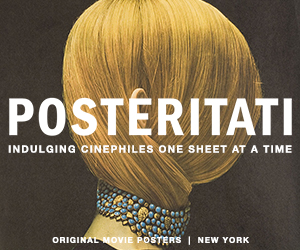The Hays Code may have been in effect in 1934, when The Scarlet Empress was released, but you wouldn’t know it from this sixth collaboration between Marlene Dietrich and director Josef von Sternberg. A ghoulish, scandalous, sexually explicit bodice-ripper loosely based on the rise of Russia’s Catherine the Great, the movie is an open mockery, under the guise of history, of the morals that the code was meant to uphold.
It’s also fairly fun, if you embrace it as a costume-drama farce full of overly heated performances set against a macabre, nightmarish production design. The movie may not showcase Dietrich at her best—and von Sternberg’s aesthetic indulgences may at times reach a breaking point—but it’s still a fascinating product of their unique partnership, an experiment that sits fascinatingly between triumph and failure.
Those familiar with the pair’s earlier films may not even recognize Dietrich at first. Young Sophia Frederica of Germany, dressed like a doll and nearly lost amidst the lace and ruffles, is a naive, wide-eyed waif when she’s chosen by Russia’s Empress Elizabeth (Louise Dresser) to marry her nephew, Grand Duke Peter (Sam Jaffe), and produce an heir to the throne. Escorting her from Germany to Russia is the lothario Count Alexei (John Lodge). When he nearly forces himself on Sophia during the journey and she responds in dainty protest, you may wonder: where’s our commanding Lola Lola, from The Blue Angel, or voracious Amy Jolly, from Morocco? Who is this helpless girl?
Perhaps Dietrich wanted to stretch beyond her established star persona or toy with audience expectations. But she’s not adept at either the childishness or the comedy that The Scarlet Empress initially asks of her. Both qualities define one of the least successful scenes, another attempted seduction by Alexei in the royal barn. Sophia, by now renamed Catherine, is more coquettish this time, but there’s still something trifling about her presence. Playfully swinging back and forth on a rope, flouncing about in the hay, playing with a piece of straw in her mouth, Dietrich seems like a parody of her former self.
Eventually Catherine (and thereby Dietrich) comes into her own. Distraught over her new husband (who turns out to be, according to the movie’s overwrought title cards, a “royal half-wit”), she takes her future into her own hands. She seduces a guard (von Sternberg conveys the consummation of the act with another one of his close-ups of Dietrich’s expressive hands) and produces a son, securing her place in the palace power structure. Gone are the frilly, juvenile dresses. In their place, costume designer Travis Banton delivers a gorgeous fur-lined gown at one point and, later, a see-through dress seemingly finished with porcupine quills. By the time Catherine leads a climactic coup, it’s no surprise to see her wearing a white variation on the Russian army’s uniforms, complete with a towering fur headpiece. That’s the gender-bending, top hat-wearing Dietrich we know.
Who is this helpless girl?
If Dietrich eventually gets ahold of her performance, I can’t say the same of the others in the cast. Dresser, as the Empress Elizabeth, varies between being a dame in an English costume drama and Ma Kettle. Lodge, as Alexei, tries to out-Dietrich Dietrich with smoldering stares and aggressive come-ons. (He’s no Dietrich.) And I didn’t know what to make of Jaffe, whose long and varied career began here. He spends the first half of the film eerily grinning while slowing rotating his head back and forth, then the second half raving like a power-mad lunatic.
Perhaps these outlandish performances were trying to compete with the production design, which you could argue is The Scarlet Empress’ true star. As envisioned by art director Hans Dreier, the Russian palace is a cavernous lair of wood and stone, more medieval than something from the 18th century. Giant doors separate the spaces and grotesque statues—created for the movie by sculptor Peter Ballbusch—loom everywhere, forming the bases of candelabras and adorning the furniture. (At a royal council meeting, each member’s chair is crowned with a withered human figure that leans over the table, their sinewy hands covering their tortured faces.)
There’s a Caligula-like air to The Scarlet Empress, from the early montage depicting Russia as a barbarous nation (including shots of nude women being tortured, which somehow snuck past the Hays Code) to Catherine making insinuations while eyeballing a lineup of soldiers. (Is it sexual harassment if they’re enjoying it?) Dietrich and von Sternberg pushed boundaries in many ways in their films together; The Scarlet Empress pushes so far it goes over the top.



